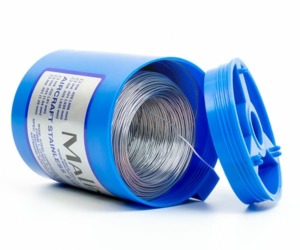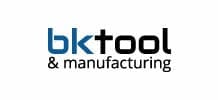What is Stainless Steel Wire Drawing?
Stainless steel wire drawing is a metalworking process that involves pulling a metal wire through a series of dies to reduce its diameter and increase its length. The process can be used to create wires of different sizes and shapes, depending on the specific needs of the application. Stainless steel wire drawing is commonly used in industries such as automotive, aerospace, and medical devices, where high-quality wires are required for various applications. The process can also improve the strength, durability, and corrosion resistance of stainless steel wires. By controlling the diameter and surface finish of the wire, manufacturers can produce wires that meet specific requirements for strength, flexibility, and other properties. Overall, stainless steel wire drawing is an important process that plays a critical role in many industries.
The History of Stainless Steel Wire Drawing
 Stainless steel wire drawing has been around for centuries, with the ancient Egyptians using it to create intricate jewelry. However, the modern process as we know it today was not developed until the 19th century. During this time, advances in technology allowed for greater precision and control in drawing wires from stainless steel.
Stainless steel wire drawing has been around for centuries, with the ancient Egyptians using it to create intricate jewelry. However, the modern process as we know it today was not developed until the 19th century. During this time, advances in technology allowed for greater precision and control in drawing wires from stainless steel.
In 1830, a German engineer named Ernst August Geitner invented the first wire-drawing machine capable of producing fine wires with high accuracy. This early machine used a series of pulleys and gears to draw wires through progressively smaller holes until they reached their desired size.
Over time, advancements in materials and machinery have led to even more sophisticated wire-drawing techniques. Today’s manufacturers use computer-controlled machines that can draw stainless steel wire down to incredibly small diameters while maintaining precise tolerances.
Overall, the history of stainless steel wire drawing is one characterized by innovation and refinement. As materials science continues to advance alongside cutting-edge technologies like artificial intelligence and automation, we can expect even more exciting developments in this field in the years ahead.
The Benefits of Stainless Steel Wire Drawing
Stainless steel wire drawing offers numerous benefits that make it an attractive choice for different industries. One of the most important advantages is its high corrosion resistance, which makes it suitable for harsh environments and applications where hygiene is crucial, such as in medical equipment and food processing machinery.
Another key benefit of stainless steel wire drawing is its strength and durability. The material can withstand heavy loads and stress without deformation or breakage, making it ideal for use in structures, cables, springs, and other components that require toughness.
In addition to these advantages, stainless steel wire drawing also provides excellent aesthetic appeal with a highly polished surface finish that enhances the appearance of products. It’s also easy to clean and maintain due to its non-porous surface.
Save Big on Stainless Steel Wire Drawing
Call 1-800-967-9697 to learn how you can get stainless steel wire drawing services for lower prices with Malin Co.
Understanding the Process of Stainless Steel Wire Drawing
Stainless steel wire drawing is a process of stretching and reducing the diameter of stainless steel wire to achieve its desired size, finish, and strength. The process involves pulling the wire through progressively smaller dies until it reaches the desired diameter. It can be used in a range of applications including medical equipment, automotive parts, aerospace components, and jewelry.
The key phrase “wire drawing dies” plays an important role in determining the final quality of the product as they help maintain consistency during wire reduction. These are typically made from tungsten carbide which provides excellent wear resistance.
Another important key phrase is lubrication, which is critical for ensuring smooth and efficient wire drawing operation while also preventing corrosion or rusting issues that arise due to exposure to heat or moisture during processing.
Stainless steel wire drawing requires advanced knowledge of metallurgy principles and proper technical expertise in selecting suitable materials, die design choices for achieving precise results every time.
Different Types of Stainless Steel Wire Drawing Techniques
Cold drawing and hot drawing are the two main types of stainless steel wire drawing techniques. Cold drawing involves pulling the wire through a series of dies at room temperature, which results in a smoother and more uniform surface finish. This technique is commonly used for smaller diameter wires and can improve the wire’s strength and ductility. Hot drawing, on the other hand, involves heating the wire to a high temperature before pulling it through the dies. This technique is used for larger diameter wires and can result in a higher production rate. However, it can also lead to a rougher surface finish and reduced ductility. Other techniques include wet drawing, which uses lubricants to reduce friction during the drawing process, and dry drawing, which does not use any lubricants. The choice of technique depends on factors such as wire diameter, production rate, and desired surface finish.
Quality Standards: What to Look for in a Stainless Steel Wire Drawing Company
When choosing a stainless steel wire drawing company, it’s important to consider their quality standards. Look for a company that follows industry standards and regulations, such as ASTM and ISO certifications. Additionally, make sure they have experience working with the specific type of stainless steel you need. A company that prioritizes quality control throughout the entire wire drawing process, from raw material selection to final inspection, is also crucial. By choosing a company with high quality standards, you can ensure that your stainless steel wire will meet your specifications and perform effectively in your application.
Experience Matters: Why Choosing an Experienced Wire Drawing Company is Crucial
When it comes to stainless steel wire drawing, experience is key. Choosing an experienced wire drawing company not only ensures a higher level of quality, but also provides peace of mind knowing that they have the knowledge and expertise to handle any issues that may arise during the process. Look for companies with years of experience in stainless steel wire drawing specifically and check their reputation within the industry. Additionally, consider their equipment and technology capabilities as well as their ability to provide customization options to meet your specific needs. By choosing an experienced stainless steel wire drawing company, you can trust in high-quality results every time.
Common Applications of Stainless Steel Wire Drawing
Stainless steel wire drawing is used in a wide range of applications, from automotive to medical industries. The process of wire drawing can produce wires with different diameters and surface finishes, making it a versatile manufacturing technique. Some common applications of stainless steel wire drawing include springs, fasteners, and electrical components.
One important factor to consider when choosing a stainless steel wire drawing company is their experience in producing wires for your specific application. Different applications may require different grades of stainless steel or specific surface finishes. It’s also important to consider the company’s quality control processes to ensure that the wires meet your specifications.
Another key consideration is the company’s production capacity and lead times. If you have a large order or tight deadlines, you’ll want to work with a company that can meet your needs without sacrificing quality.
Overall, stainless steel wire drawing offers many benefits for manufacturers looking to produce high-quality wires for various applications. By working with an experienced and reliable wire drawing company, you can ensure that your products meet your exact specifications and are delivered on time.
Quality Control in Stainless Steel Wire Drawing: What You Need to Know
Quality control is a crucial aspect of stainless steel wire drawing. It ensures that the final product meets the desired specifications and requirements. Process control is equally important, as it helps maintain consistency from batch to batch.
One of the most important aspects of quality control is selecting the right raw materials for wire drawing. The chemical composition, physical properties, and surface conditions of the material can impact its performance during wire drawing.
In addition to raw materials selection, other factors such as die design, lubrication, cooling techniques, and equipment maintenance also play a significant role in ensuring consistent quality output.
Regular testing and inspection are necessary steps to ensure proper quality control during stainless steel wire drawing. This includes conducting various tests like tensile strength testing or checking for defects like cracks or surface irregularities.
By implementing strict quality control measures throughout all stages of the stainless steel wire drawing process — raw material selection through production — manufacturers can deliver high-quality products that meet customer expectations consistently while minimizing waste levels.
Troubleshooting Common Issues in Stainless Steel Wire Drawing
Stainless steel wire drawing is a complex process that requires precision and attention to detail. However, even with the best equipment and skilled operators, issues can arise during the process. One common issue is surface defects on the wire, such as scratches or pits. This can be caused by improper lubrication or excessive tension during drawing.
Another issue is wire breakage, which can occur due to a variety of factors such as improper die alignment or excessive heat. It’s important to regularly inspect equipment and adjust as needed to prevent these issues from occurring.
Quality control is crucial in identifying and addressing any issues that may arise during stainless steel wire drawing. Regular testing and inspection of the wire can help catch defects early on and prevent them from becoming larger problems down the line.
Overall, troubleshooting common issues in stainless steel wire drawing requires a thorough understanding of the process and close attention to detail. By addressing issues promptly and implementing effective quality control measures, companies can ensure high-quality wire production and maintain customer satisfaction.
Stainless steel wire drawing is a vital process in the manufacturing of various products. Understanding the basics and techniques behind this process can help you make better decisions when it comes to choosing a wire drawing company for your project. Quality control plays an essential role in ensuring that the finished product meets industry standards and requirements while troubleshooting helps to identify and fix common issues during production. With trends and innovations constantly emerging, there’s no doubt that the future of stainless steel wire drawing will only get brighter with time. So, whether you’re looking to produce durable cables or high-quality jewelry, working with an experienced wire drawing company can help bring your vision to life.
If you are looking for stainless steel wire, lock wire, or any other custom wire products, get in touch with Malin today, and our team can help you find the ideal wire drawing solutions for your project!
Wire Drawing Process FAQs
Is Wire Drawing a Cold Working Process?
Yes, wire drawing is a cold working process. Cold working refers to the plastic deformation of a material below its recrystallization temperature. In wire drawing, a metal wire is pulled through a series of dies to reduce its diameter and increase its length. This process is performed at room temperature or slightly elevated temperatures, well below the recrystallization temperature of the material.
What Are The Advantages of The Wire Drawing Process?
The wire drawing process offers several advantages, making it a widely used method for producing wires of different diameters. Here are some key advantages of the wire drawing process:
- Size Reduction: Wire drawing allows for precise reduction in the diameter of a metal wire. This is crucial for manufacturing wires of various thicknesses to meet specific requirements for different applications.
- Improved Mechanical Properties: The cold working involved in wire drawing often results in improved mechanical properties of the material, including increased tensile strength and hardness. This makes the drawn wire suitable for applications where strength is a critical factor.
- Dimensional Accuracy: The process provides excellent dimensional accuracy and control over the final wire diameter. This is essential for meeting tight tolerances in industries such as electronics, automotive, and aerospace.
- Surface Finish: Wire drawing can improve the surface finish of the wire, producing a smoother and more polished surface. This can be advantageous for applications where a high-quality appearance is important.
- Increased Length: Wire drawing elongates the wire, providing longer lengths of material. This is beneficial for manufacturing processes where longer continuous lengths of wire are required.
- Material Utilization: The process allows for efficient utilization of raw materials. By drawing wire from larger-diameter rods or coils, manufacturers can minimize material waste.
- Versatility: Wire drawing is a versatile process that can be applied to various metals, alloys, and materials, including steel, aluminum, copper, and more.
- Cost-Effective Production: The ability to produce wires with specific dimensions and properties in large quantities makes wire drawing a cost-effective manufacturing process.
- Consistency: The process enables the production of wires with consistent properties, ensuring uniformity in the final product.
- Wide Range of Applications: The versatility of wire drawing makes it suitable for a broad range of applications, including electrical wiring, cables, springs, fasteners, and various components used in manufacturing.
Overall, the advantages of wire drawing, including size reduction, improved mechanical properties, dimensional accuracy, and versatility, contribute to its widespread use in diverse industries for the production of high-quality wires.
What Are The Types of Wire Drawing?
Wire drawing is a versatile process that can be categorized into several types based on the equipment and techniques used. The primary types of wire drawing include:
Single-Block (Conventional) Wire Drawing:
- In this traditional method, a single block with multiple dies is used to draw the wire through a series of progressively smaller holes or dies. Each successive die reduces the diameter of the wire.
Continuous (Multi-Pass) Wire Drawing:
- Continuous wire drawing involves passing the wire through multiple dies in a single, continuous process. The wire is drawn through a series of dies arranged in tandem, reducing its diameter incrementally with each pass.
Turk’s Head Drawing:
- In Turk’s head drawing, the wire is passed through a set of rotating rolls arranged in a circular or elliptical pattern. This process imparts a helical shape to the wire, producing a spiral pattern on the surface.
Bull Block (Slip-Type) Wire Drawing:
- Bull block wire drawing involves pulling the wire through a single die while the block itself slips or rotates. This method is suitable for larger-diameter wires.
Rod Drawing:
- Rod drawing is a variation where the starting material is typically a rod rather than a wire coil. The rod is reduced in diameter through a series of dies to produce the desired wire diameter.
Dry Drawing:
- In dry drawing, no lubricant or coolant is applied during the drawing process. Instead, the dies and wire are cooled by natural air convection.
Wet Drawing:
- Wet drawing involves applying a lubricant or coolant during the drawing process to reduce friction, heat, and wear on the dies. This can improve the surface finish of the drawn wire.
Intermediate Annealing:
- Intermediate annealing may be incorporated between drawing passes to soften the wire, making it more ductile and reducing the risk of fractures or defects.
The choice of wire drawing method depends on factors such as the desired wire diameter, material properties, production volume, and the specific requirements of the application. Each type of wire drawing has its advantages and is selected based on the characteristics of the final product and the efficiency of the manufacturing process.






